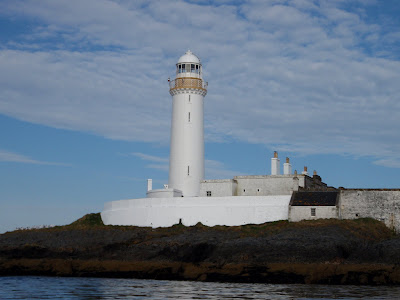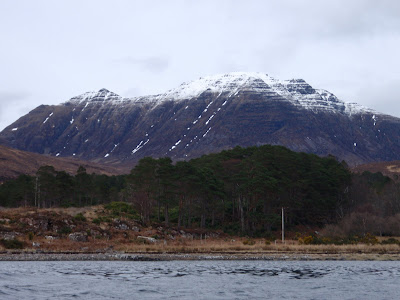
The Moray Firth coast between Lossiemouth and Burghead consists of sandy beaches then sandstone cliffs which readily erode into caves and stacks. It's possible to paddle into and through many of the caves. This two-legged stack has detached from the large cave system on the left. The caves are still used for bivvying in and are ideal - but landings can be difficult along this stretch if there's any swell at all.

From landward, it's possible to make out steps cut in a diagonal line up the eastern leg by folk collecting the eggs of the Fulmars and Kittiwakes which nest on the stack. both these species are present in huge numbers along this coast.

Towards Hopeman, this rising line of caves all show signs of long-term occupation. It's said that one of the nearby caves was occupied until the 1960's. One of the caves is known as the Sculptor's Cave and contains Pictish drawings and symbols including the Fish, Crescent and V-Rod incisings found on many Pictish symbol stones in the north east of Scotland.
Further east, this bay near Clashach Cove shows the bedding of the sandstone very well. I was keeping a little offshore here as the seabirds are all now either nesting or preparing to. The noise and smell are increasing close to the cliffs! Near here, dinosaur footprints are found in the bedding planes.

On the shore, the mechanics of all this cave and stack excavation is obvious. The granite and quartz pebbles are beautifully polished by wave action.
This is a great paddle on a calm day, and full of interest. There are good launch sites both at Lossiemouth West Beach and at Hopeman harbour (car parking and cafes at both places too!). Tides aren't strong here, but exposure to the open North Sea often produces large swell and clapotis around the cliffs.











































